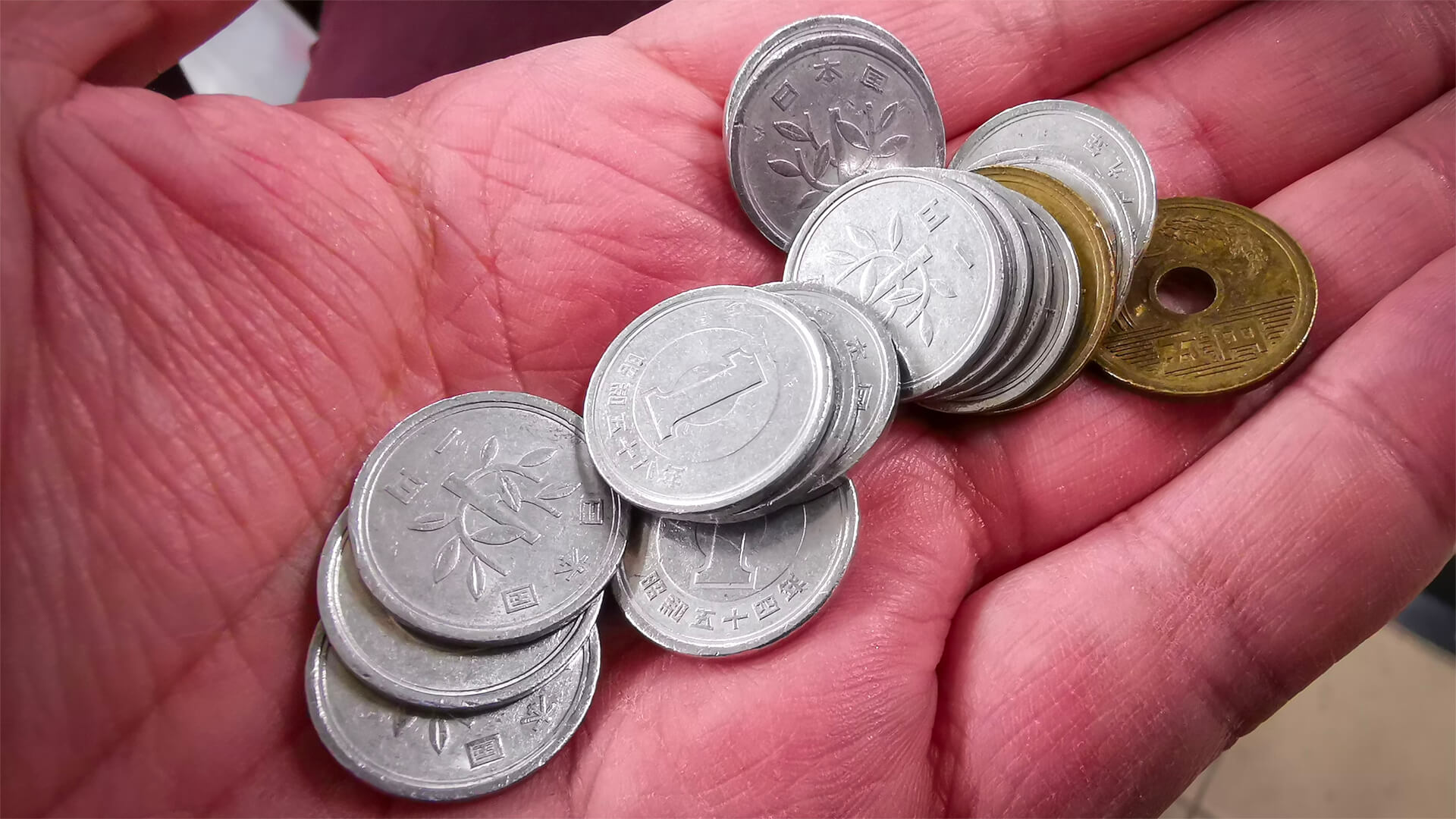The current Chinese system has been staring down the barrel of a number of serious challenges for quite a while now, and this new economic data just took the safety off that gun.
Between the demographic bomb that went off a few years ago and the lack of a post-COVID recovery, it’s no surprise that China is facing an economic funk. However, years and years of compressed economic damage are on the brink of bursting out and wreaking havoc on the entire Chinese system.
That’s right; we’re talking about deflation. This is only one month of data, so I don’t want to blow this up quite yet…but consumption has plummeted, there are ongoing trade wars, an oversupply of goods and undersupply of demand in both domestic and foreign markets, and that’s not even the whole picture.
We saw deflation take over Japan in the 90s, and it took them nearly 25 years to pull themselves out of it. The Japanese situation was leaps and bounds better than China’s current situation, so if this data is even partially indicative of China’s economic future, we could be looking at the beginning of the end.
Prefer to read the transcript of the video? Click here
Here at Zeihan On Geopolitics we select a single charity to sponsor. We have two criteria:
First, we look across the world and use our skill sets to identify where the needs are most acute. Second, we look for an institution with preexisting networks for both materials gathering and aid distribution. That way we know every cent of our donation is not simply going directly to where help is needed most, but our donations serve as a force multiplier for a system already in existence. Then we give what we can.
Today, our chosen charity is a group called Medshare, which provides emergency medical services to communities in need, with a very heavy emphasis on locations facing acute crises. Medshare operates right in the thick of it. Until future notice, every cent we earn from every book we sell in every format through every retailer is going to Medshare’s Ukraine fund.
And then there’s you.
Our newsletters and videologues are not only free, they will always be free. We also will never share your contact information with anyone. All we ask is that if you find one of our releases in any way useful, that you make a donation to Medshare. Over one third of Ukraine’s pre-war population has either been forced from their homes, kidnapped and shipped to Russia, or is trying to survive in occupied lands. This is our way to help who we can. Please, join us.
CLICK HERE TO SUPPORT MEDSHARE’S UKRAINE FUND
CLICK HERE TO SUPPORT MEDSHARE’S EFFORTS GLOBALLY
TRANSCIPT
Hey everybody. Peter Zeihan here coming to you from Colorado. And the new news out of China is they’re facing a kind of a triple economic funk. For those of you who’ve been following China for a while, you know that they’ve never really recovered from COVID, whereas nearly every other country in the world, once the opening finally happened and the end of the epidemic was declared, we saw an explosion in consumption as people tried to get back to some version of their life, which generated a lot of inflation.
We’ve not seen that in China. Growth is actually lower now than it was over the course of the last two years when they were supposedly under complete lockdown. Consumption is down. Imports and exports both dropped in July compared to a year earlier by double digits. A percentage is normally the sort of stuff you only see out of a country like, say, Ukraine or Russia.
When a war starts and this is happening, when the Chinese are supposedly getting back to normal. Now, a lot has gone down since the opening chapters of COVID in China, which date back to the fourth quarter of 2019. But something to remember is that we saw a demographic bomb go off in China before COVID going back to as early as 2017.
The demographics really turned negative from 2017 to 2021. The birth rate dropped by about 40%. And even in the months before COVID, we saw new car sales, which are kind of a quintessential indication that your population is kind of up and coming and feels confident about its future and spent a lot of money going negative. And they’ve never really recovered.
So now after COVID, we’ve had all of these trends with four or five, six years behind them. And as they’re manifesting in a more normal environment, the numbers are really, really, really bad. Now, for folks who are not familiar with demographics, this is probably a little bit of news. For those of you who are familiar, not too much of a surprise, but the very, very short version is that most of the consumption of the modern system happens when you’re in your twenties or your thirties, when you’re buying cars and raising kids and building homes.
Well, because the one child policy Chinese don’t have much of a generation in that block at all. And since the one child policy is now over 40 years old, we’ve now had a full generation of people to not have kids. And that is manifesting in the data as well. Anyway, that’s kind of problem. One problem to her boy, deflation.
Now in the United States, in Europe, in most of the developing world where there’s India, Brazil, Indonesia, the rest, the opening of COVID was accompanied by a huge burst of inflation. People were trying to consume again to get back to some version of their normal lives. And over the last 2 to 3 years, their consumption patterns had changed.
Instead of buying cars or homes, they were buying computers and phones in order to adapt to the new reality. Well, now they’re shifting back and supply chains take about 18 months to catch up. Now, in the United States, it has been 18 months now since the last state to reopen California did so. And so we’re seeing inflation incrementally drop, as it has been for the last year.
This is broadly what you should expect. In China, things are going the opposite direction. The consumption boom never happened. So supply chains never had to adjust. What has happened is people are less confident in their futures. So the consuming less. And we’re seeing mounting trade wars out of Europe, Japan, the United States and increasingly secondary states like the Koreans are joining in.
And that means the Chinese have fewer places to send stuff to. So what’s happening is product that was normally produced for export from China is now being locked up within the Chinese system at the same time that the population is purchasing less. You have an oversupply of good of goods and under demand, both at home and abroad. With all those extra goods, prices go down and you get deflation.
Now, short bursts of deflation are no big deal. So I don’t want to overstate what’s happening here. It’s only one month of data at present, but this is what you would expect when you’re at the beginning of a deflationary spiral that’s caused by a fundamental mismatch between supply and demand, which is where we are going with globalization and the Chinese demographic trends, which are now well past the point of no return.
The last country to face a major deflation burst was Japan started in the late 1990s, lasted for 2025 years. You could argue that it might be over now because of their COVID reassertion of demand. That might be overoptimistic, but the issue is once those prices start to drop because of that mismatch between supply and demand, it’s devilishly hard to adjust because normally you would do one of two things.
Number one, you could reduce supply, but that means closing productive capacity, which means people lose their jobs, which means they spend less, which means that mismatch persists. Or you can increase demand, usually with government stimulus. This might not work in China and not just because of the huge demographic bomb that’s going off. The Chinese economic system isn’t really based on exports or consumption.
It’s based on invest mint. The idea that the state fosters mass borrowing in order to build industrial plant infrastructure in the rest that based on whose numbers you’re using, are somewhere between 40 and 70% of the entirety of the Chinese economy, and it’s generated the vast majority of economic growth going back 40 years. Well, you can only do that for so long.
Eventually. You don’t need any more bridges or any more factories. And I would argue the Chinese reached that point before COVID. And so, again, there’s been this three, four year lag between reality and the data. Finally manifesting. The point is, more spending probably isn’t going to help the marginal outcome. The amount of growth they get for every yuan spent has been dropping steadily for 40 years, and now it’s in far less than 1 to 1.
So it really doesn’t matter how much more fuel and how much cheap capital the Chinese pump into the system. It’s never going to generate more economic activity than what it cost to put it in the first place. This is what happened in Japan in the late 1990s. In the early 2000s, they had reached the point where their economic model couldn’t run any longer.
They were getting basically negative income on their investments and they had then 20 to 25 years of deflation. The advantage that the Japanese had going into this is they already had a global supply chain, they already had global allies. They had an option for offshoring some of their manufacturing incrementally. They had strong demand out of the United States.
They had a good political relationship with the United States. And most of all, they were already rich. The average Chinese citizen today in inflation index terms, compared to the average Japanese citizen in the year 2000, has an income that something like a quarter or a fifth what it is in China. They’re getting old and they’re getting into a permanent recession and a deflationary spiral long before they got rich.
And this can end in any number of horrible ways. So, again, one month of data, I do not want to overplay this, but I’ve been watching for something like this for several years now. And in the post-COVID environment, we’re seeing the data belatedly match up with where demographics and geopolitical trends suggest that it should have been years ago.
If this proves to be the actual story, as opposed to a blip in the data, you’re going to see this get significantly worse in a relatively short period of time because we have years of compressed damage that is now bursting out all at once. And because the political system in China is basically down to one man cult of personality, the capacity of the Chinese state to come up with a creative solution is almost zero.
And even in Japan, where they were willing to talk about this publicly, it still took a generation to pull out of this. And alliances and the Chinese don’t have either. All right. That’s it for me. Take care.









